Birds A - M
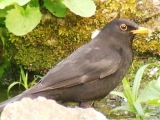 The males are black but, strangely, females are brown often with spots and streaks on their breasts. The bright orange-yellow beak and eye-ring make adult male blackbirds one of the most striking garden birds. One of the commonest UK birds, its mellow song is also a favourite.
The males are black but, strangely, females are brown often with spots and streaks on their breasts. The bright orange-yellow beak and eye-ring make adult male blackbirds one of the most striking garden birds. One of the commonest UK birds, its mellow song is also a favourite.
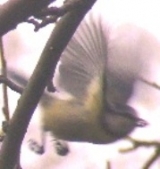 The blue tit is one of the commonest garden birds, coming fourth in the RSPB's Big Garden Birdwatch in 2006, behind the house sparrow, starling and blackbird.
The blue tit is one of the commonest garden birds, coming fourth in the RSPB's Big Garden Birdwatch in 2006, behind the house sparrow, starling and blackbird.
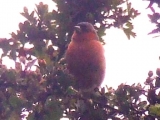 The bullfinch is rarely seen in the Pleasaunce but the male is unmistakable with his bright pinkish-red breast and cheeks, grey back, black cap and tail, and bright white rump.
The bullfinch is rarely seen in the Pleasaunce but the male is unmistakable with his bright pinkish-red breast and cheeks, grey back, black cap and tail, and bright white rump.
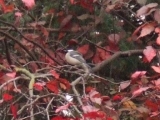 The smallest of our tit species, the coal tit is distinguished by its glossy black crown, white cheeks and nape, and grey-buff belly plumage. It is less than half the weight of a great tit which it resembles.
The smallest of our tit species, the coal tit is distinguished by its glossy black crown, white cheeks and nape, and grey-buff belly plumage. It is less than half the weight of a great tit which it resembles.
The head is unusually large in proportion to its body and short tail. It is typically found in and around conifers where it gets its food.
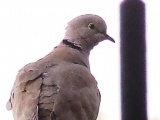 Easily over-looked as a pigeon, the collared dove is its own species, slightly smaller and more timid than the feral pigeon. Collared doves nest most of the year and can produce four or five broods, often in conifers.yews or deciduous trees covered in ivy. The bird's marking vary for each individual but all have the thin narrow strip of black below the neck. From the woodland glen in the Pleasaunce, they can be seen in the playing fields, either on the grass or on posts.
Easily over-looked as a pigeon, the collared dove is its own species, slightly smaller and more timid than the feral pigeon. Collared doves nest most of the year and can produce four or five broods, often in conifers.yews or deciduous trees covered in ivy. The bird's marking vary for each individual but all have the thin narrow strip of black below the neck. From the woodland glen in the Pleasaunce, they can be seen in the playing fields, either on the grass or on posts.
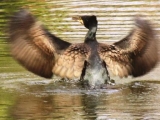 Lured by abundant stocks of fish in the moat of all sizes, cormorants occasionally pay feeding trips to the moat.
Lured by abundant stocks of fish in the moat of all sizes, cormorants occasionally pay feeding trips to the moat.
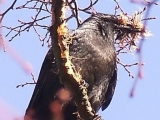 It's often said a crow in a flock is really a rook and a rook on its own is really a crow. Their diet is ground insects and grain but in spring and summer eggs, young bird and small mammals. It scavanges off other birds. Nests are usually sited to give open views high up in tall trees and they proclaim their territory from consipcuous trees or rocks.
It's often said a crow in a flock is really a rook and a rook on its own is really a crow. Their diet is ground insects and grain but in spring and summer eggs, young bird and small mammals. It scavanges off other birds. Nests are usually sited to give open views high up in tall trees and they proclaim their territory from consipcuous trees or rocks.
 The dunnock, or hedge sparrow, is closely related to the house sparrow, only with great areas of grey around the neck.
The dunnock, or hedge sparrow, is closely related to the house sparrow, only with great areas of grey around the neck.
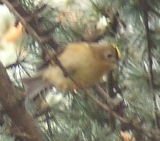 The goldcrest is onme of the smallest European birds, about half the weight of a blue tit. They can be difficult to find as they flit between foliage. They eat spiders and insects. Some breed in this country but in September and October they are supplemented by birds from the continent.
The goldcrest is onme of the smallest European birds, about half the weight of a blue tit. They can be difficult to find as they flit between foliage. They eat spiders and insects. Some breed in this country but in September and October they are supplemented by birds from the continent.
 The goldfinch is a bird of woodland edges and glades but have adapted well to scrub and waste ground. The bill can extract seeds from small weeds and thistle, teasles and burdock. Goldfinches are recognisable by their cheerful twittering song and often perch on telephone wires.
The goldfinch is a bird of woodland edges and glades but have adapted well to scrub and waste ground. The bill can extract seeds from small weeds and thistle, teasles and burdock. Goldfinches are recognisable by their cheerful twittering song and often perch on telephone wires.
|
| Last Updated: 1st-Jan-2007 13:27 |
 Print Print |
|
|
|
|
|
|
Subscribe to newsletter
|
 |
|
|
|
|
|
|